Republic P-47D-25-RE Thunderbolt "Blackie"
s/n 42-26704 (code B8-?)
Derval, near the railway station (44)
(contributors : Vincent Bourgine, Pierre Mahé, Jaap Vermeer, "TimeFlies")
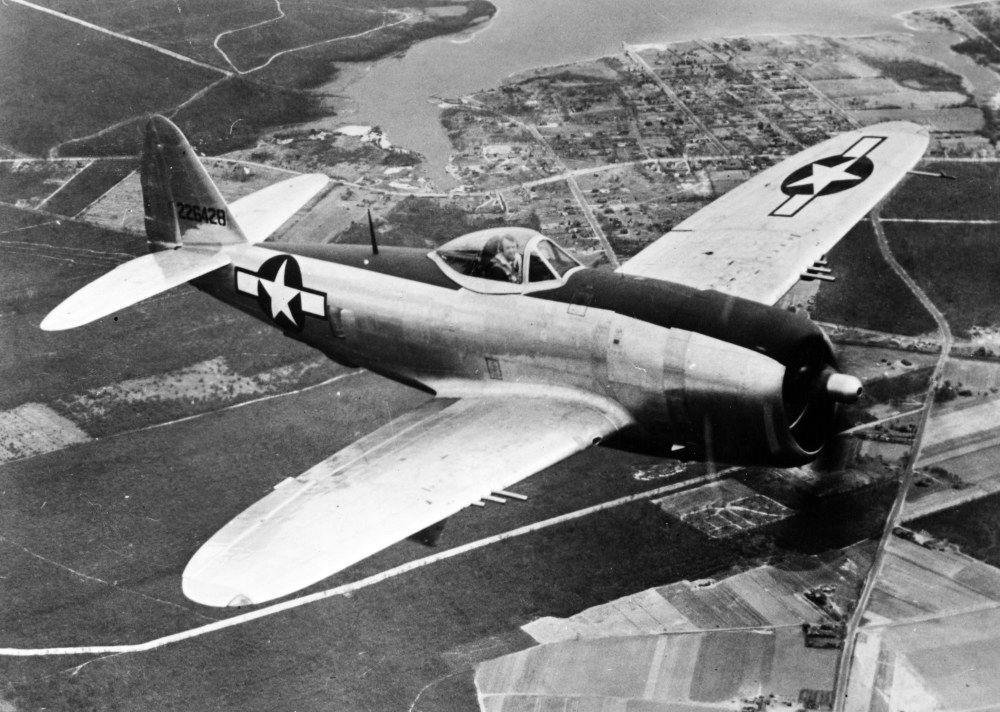
A Republic P-47D-25-RE - Photo San Diego Air and Space Museum Archive
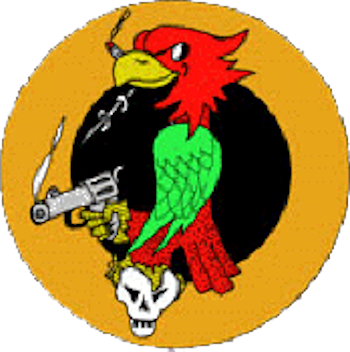
Badge of 379th FS - Source USAF (public domain)
Pilot (362nd FG - 379th FS)
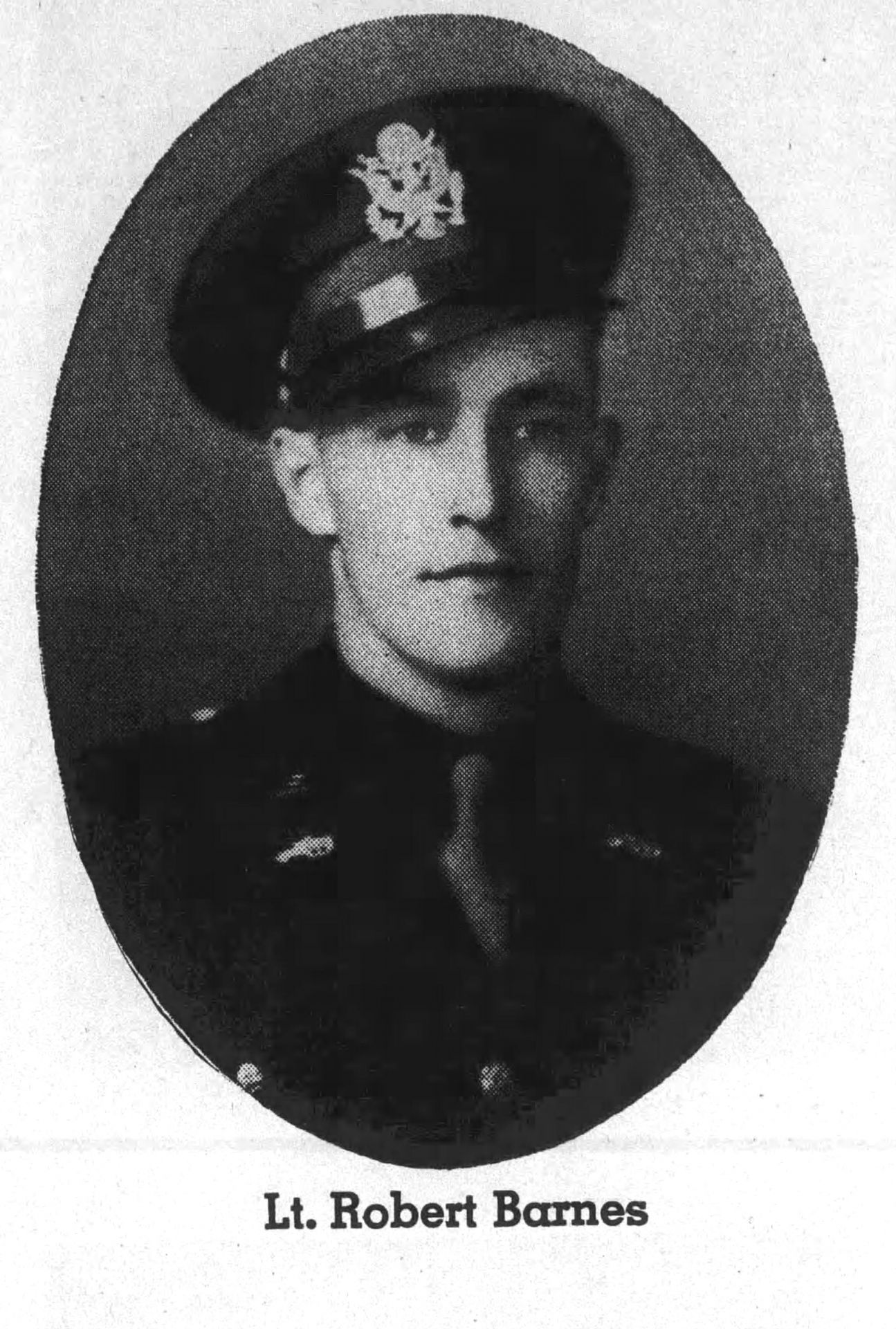
photo Jaap Vermeer collection
1st Lieutenant Robert George BARNES (service number O-745266 - DFC, Air Medal with 5 Oak Leaf clusters), K.I.A.
Born June 2, 1920, in Leechburg, Armstrong County, Pennsylvania.
He later lived in New Kensington, Westmoreland County, Pennsylvania (USA).
Son of Mr. and Mrs. Dale Barnes.
Enlisted March 30, 1942, in Pittsburgh, Pennsylvania.
Buried in Saint-James American Cemetery, Plot 1, Row 11, Grave 1.
THE STORY
A P-47D Thunderbolt crashed in Derval on July 6, 1944.
On July 6, 1944, 1st Lt. Barnes took off from RAF Headcorn, an Advanced Landing Ground (ALG) located northeast of Headcorn in Kent, England. Established in 1943, this base was a temporary prototype for the future ALGs that the Allies planned to open in France after the D-Day landings. It was closed in September 1944. The mission was an armed reconnaissance and dive-bombing mission.
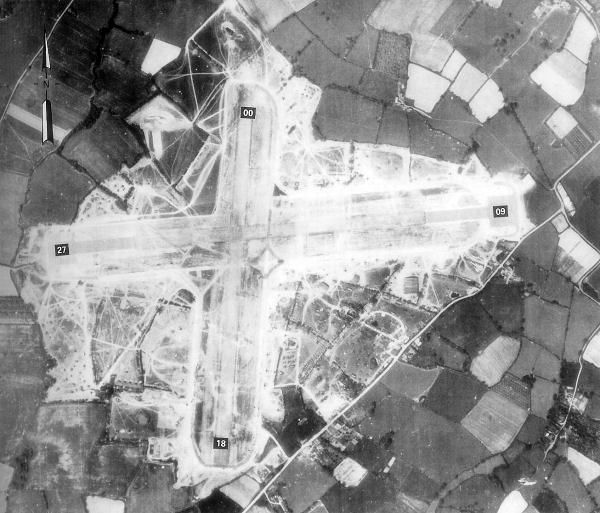
RAF Headcorn on May 11, 1944 - Photo United Kingdom Government (public domain)
Barnes was flying with 1st Lt. John Rollin SHUMWAY, who recounts Barnes's crash in a Missing Air Crew Report (see MACR 6670 in appendices) :
The ceiling was 12,000 feet and visibility was good.
"On July 6, 1944, Lt. Barnes, flying Yellow 3 in my flight, reported a truck at five o'clock. I could not locate the truck, so ordered Lt. Barnes to lead. He peeled off to the right and fell into trail at about 400 yards. His pass was about a 20 dive. I saw him fire a burst as he was nearing tree top height. As he was still firing, his plane seemed to disintrigate, burning at the time, and almost immediately it exploded about 100 yards from the trees. I circled and could only see a small fire and a few pieces scattered about."
In his report, 1st Lt. Shumway sketched a drawing to show the location where Barnes was last seen.

A letter sent on August 13, 1951, by Madame Marie-Anne Gautier, from Derval, to the mother of 1st Lt. Barnes, provides details on the crash of the aircraft.
"Madam,
The Mayor is informing me of the request for information you sent to the French consulate regarding your son. My father and I were among the people who recovered his body shortly after the accident. I understand your desire for details, and I am very surprised that after so many years you were unable to obtain them sooner. Therefore, I feel it my duty to respond quickly to tell you what I know about the tragic end of your son, whose name I remember very well.
On that July afternoon, we were a group of men and women, members of the Red Cross emergency teams, on alert. Our small, very quiet town had not suffered any bombing or war damage ; we only saw the passing squadrons heading for the large neighboring centers, and we were not expecting that our services would be used so immediately.
The noise of aircrafts flying over Derval, quite low, first caught our attention ; we were watching an aircraft which suddenly dived towards the station, a tiny station where only three or four trains pass through a week. Wrong target ? May be. We immediately heard the sound of a bomb exploding some distance away, then a machine-gun attack. A few moments later, the doctor we were with, arriving from visiting a patient, informed us that her car, stopped very close to the railway line, had been the target of this machine-gun attack. Your son probably thought he was attacking a German car and he dived straight towards it as I told you, but, coming down too low, he caught tree branches and telephone wires and could not go up. He then skimmed, without any accident, the few houses near the station and crashed 200 meters further on, in a field ; the explosion was heard very far away. It was then that we went to the scene of the accident ; some gentlemen, among whom was my father, collected the remains of your poor boy and transported them to the town hall of Derval. A small package was found on him, probably containing his papers, and it was immediately handed over to the authorities.We didn't know who he was at the time, but I remember seeing your son's hand, and I realized he was a young man. We were all devastated ; I was all the more struck by the fact that one of my cousins, also an airman, had disappeared a few months earlier in a similar accident.
A religious ceremony was celebrated the next day at the Catholic church, and then the body was buried in the cemetery [in Derval]. Many people attended the funeral ; a collection of flowers had been made from the families of the town, and his grave was often decorated with flowers afterward.
A few days later, an American officer, who had come to Derval to obtain information, told us about the accident but preferred not to go to the scene ; he seemed very saddened. It is undoubtedly from him that you got the little information you have.
This is all that I can tell you, Madam, of your son's last moments. He fell in the line of duty, and you can only be proud of him. As for us, we acted as we should towards an Allied soldier ; there is no special merit in that, believe me. Assuring you of my sympathy, I beg you to accept, Madam, my respect.
Marie-Anne Gautier
Derval 13 August, 1951".
An extract from the document "Derval - Vie Rurale au XXème siècle - 1900 - 1950" (see appendices) gives following information :
On July 6, 1944, Derval witnessed a serious air crash involving an American. Around 3:00 p.m., a group of three "Thunderbolt" fighters arrived from Rennes over Derval. Suddenly, one of them dived from Le Boschet, topping the trees along the road leading to the station and crashing into a meadow about a hundred meters away.
What happened ? According to the version of events at the time, it seems that this airman, Lieutenant Robert G. Barnes, while attempting to machine-gun Dr. Capel's car, which he had probably mistaken for an enemy vehicle, lost control of his aircraft and clipped the treetops, causing the crash and his death.
There is a second version that wasn't taken seriously, probably because it came from a child of about ten years old and perhaps it was less "convenient" !
" I was tending my cows on the hill of La Grée, between the mill "du Thu" and the Boschet woods, when I saw a group of aircrafts coming towards me. Thick smoke was coming from one of them, then it lost altitude. A few minutes later, I heard a huge noise and realized it had just crashed". If we accept this version, it is reasonable to assume that this aircraft may have had engine trouble or that it was hit by anti-aircraft fire from Rennes (or elsewhere).
Noticing the crash of one of them, the other airmen heading south turned around and dropped a few bombs in the area. Perhaps to salute their comrade ? It has been claimed that a bomb fell behind the Calvary of "Pas d'Hin", although the location could not be clearly identified.
In the minutes following this accident, several people went to the scene. Some took a piece of aircraft metal, much like one might take a relic. Others worked to recover the remains of the unfortunate pilot. His mortal remains were taken to the Hospice morgue. The following day, they were buried in the Derval cemetery. It is said that a group of about a hundred men and a few women accompanied the coffin of this Allied airman, and that two German Feldgendarmes, in sidecars, rode alongside the funeral procession and paid military honors.
Later, after the liberation, a delegation of local authorities came to pay their respects at his grave. A photograph immortalizing this event has remained undiscovered. After the war, in 1945, Robert G. Barnes' coffin was exhumed and sent to his native country : the United States [Barnes was in fact taken to the cemetery of St. James in Normandy].
IN MEMORIAM
• The grave of 1st Lt Barnes in July, 1944 in Derval
We are trying to identify the people around the grave. If you recognize anyone, please contact us : b.paquet@orange.fr

The grave of 1st Lt Barnes in Derval in 1944.
Photo Pierre Mahé
• The grave of 1st Lt Barnes today in the American Military Cemetery of Saint-James (50)

The grave of 1st Lt Barnes today in Saint-James (50).
Photo Vincent Bourgine
• Memorial in Headcorn, Kent, England
This plaque, commemorating the existence of the RAF base, pays tribute to the airmen of the 362nd FG who took off from RAF Headcorn between April and July 1944 and who were killed
1st Lt Barnes, of the 379th FS (arrow) is cited.
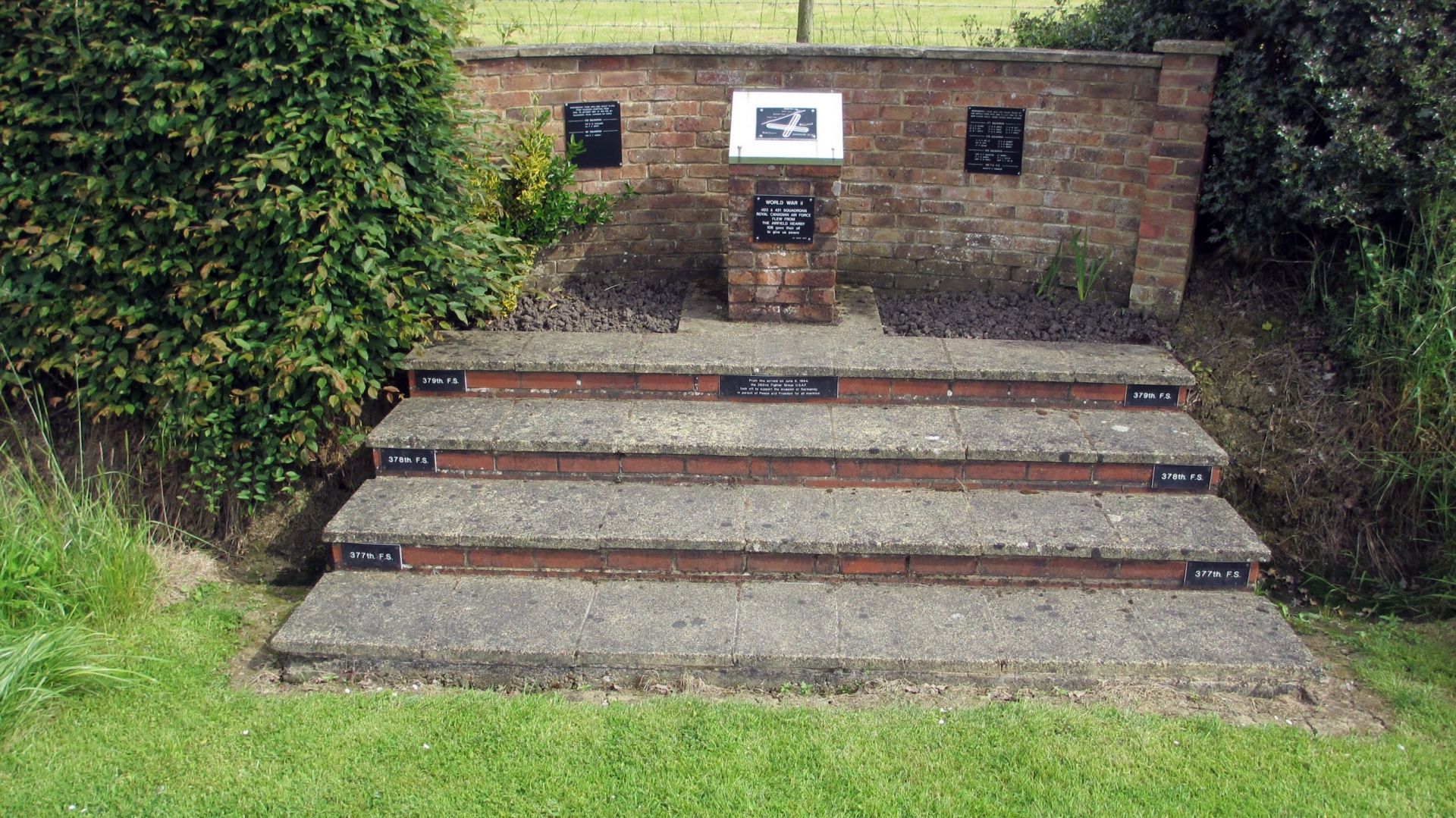

Memorial plaque in Headcorn, Kent, England.
Photo "TimeFlies" source website Findagrave
IN THE PRESSE
• Newspaper articles likely published in a local newspaper after 1st Lt. Barnes's loss.
This article mentions a letter received by Barnes's parents, sent by Major William J. Flavin. It informs us that 1st Lt. Barnes was cited for the Air Medal with three oak leaf clusters.
[Barnes ultimately received five oak leaf clusters].
We also learn that Barnes graduated from the Lincoln Aeronautical Institute in 1942 and was a member of the institute's softball and basketball teams.


Document's source : "Jaap Vermeer" website Findagrave
APPENDICES
• MACR 6670 (Missing Air Crew Report) of 1st Lt John Rollin SHUMWAY
(source American National Archives).
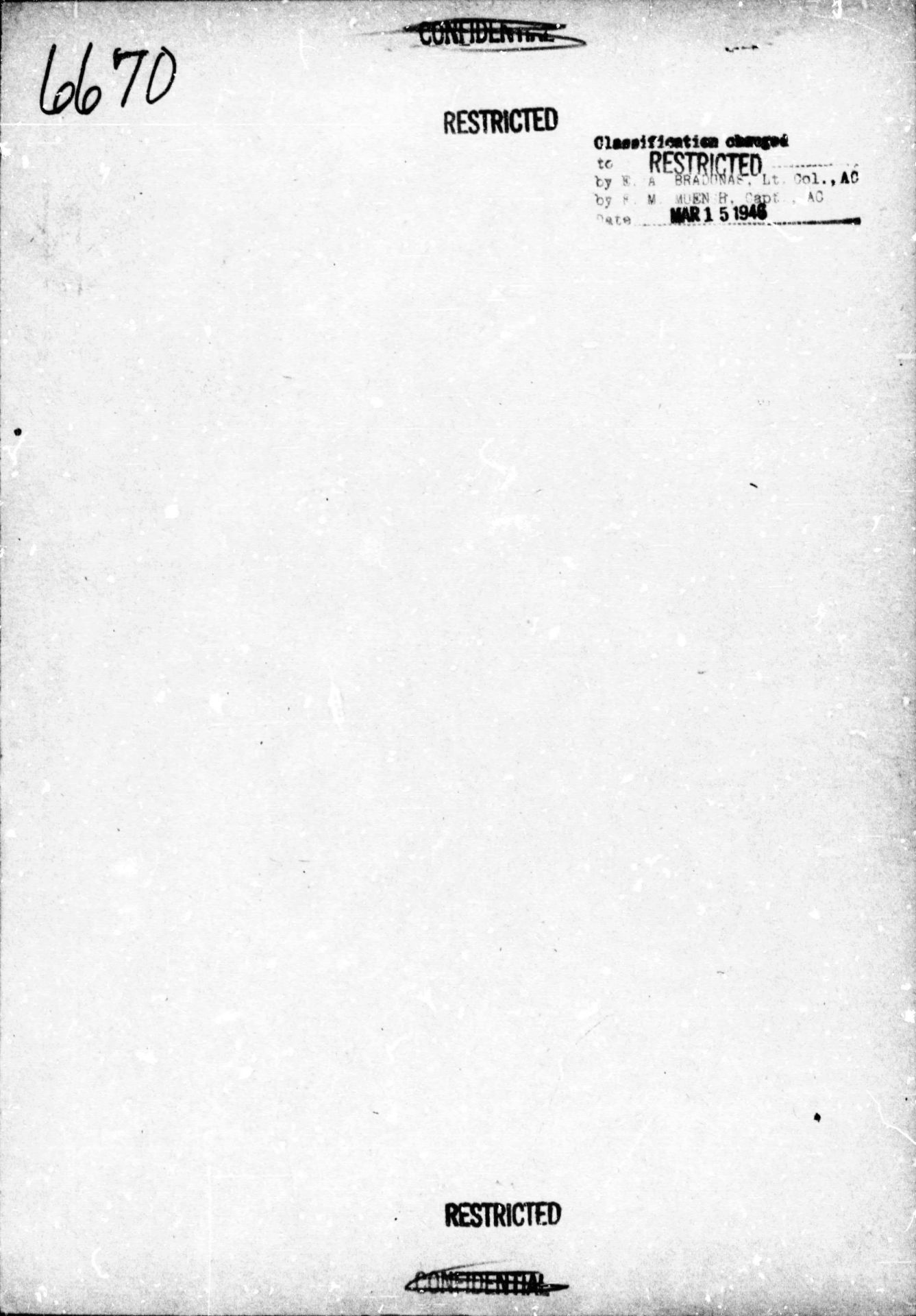
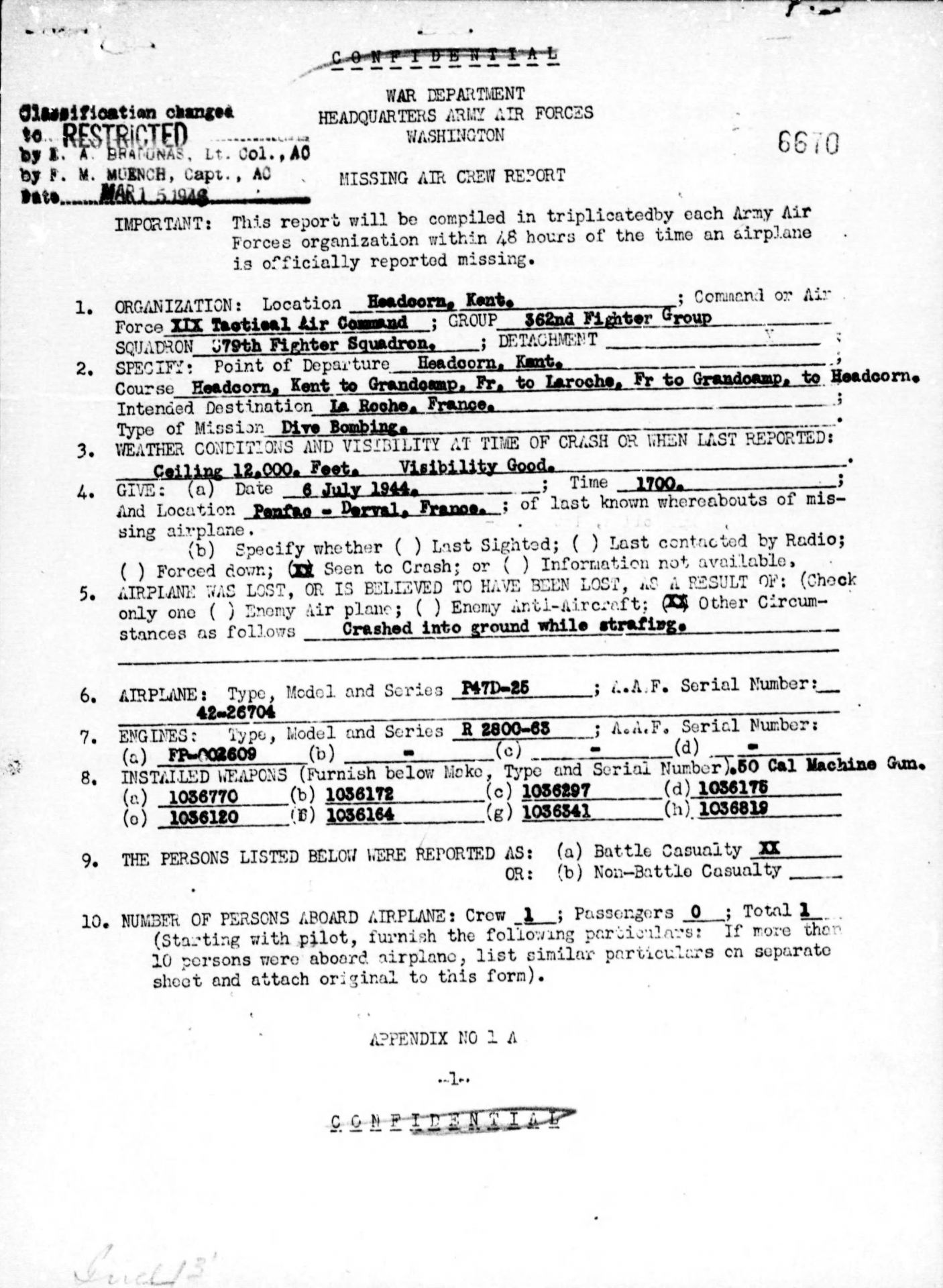
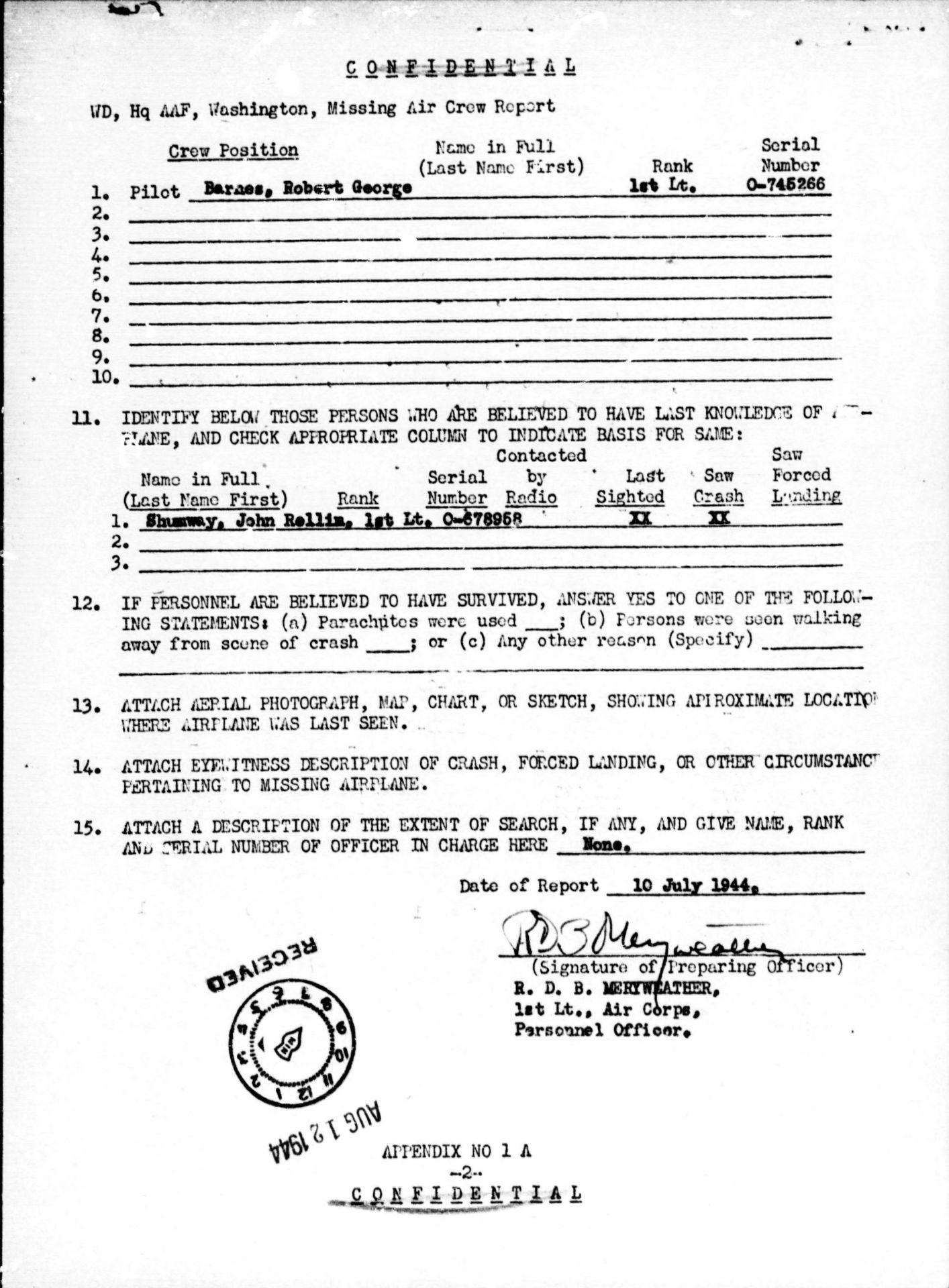

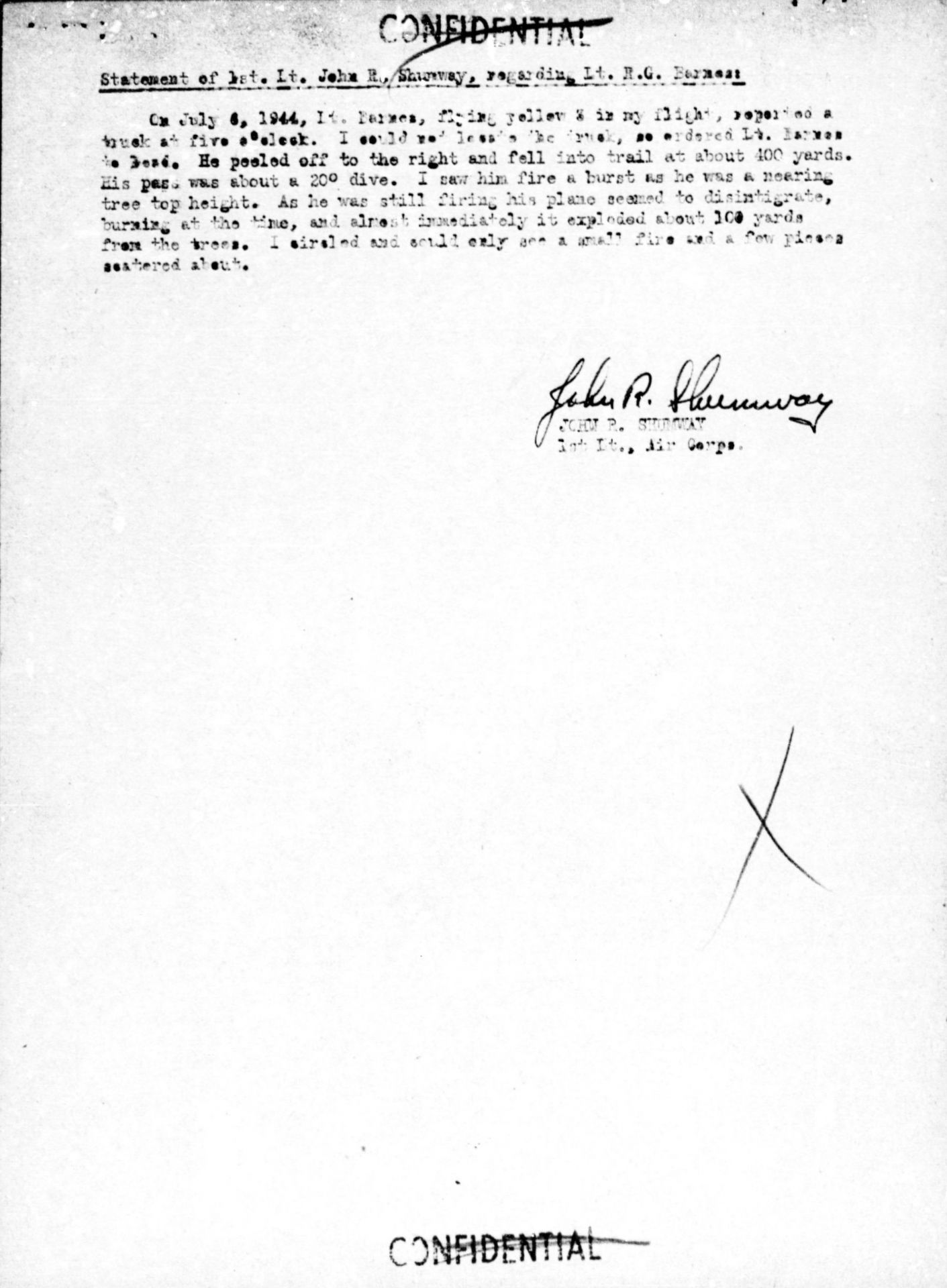

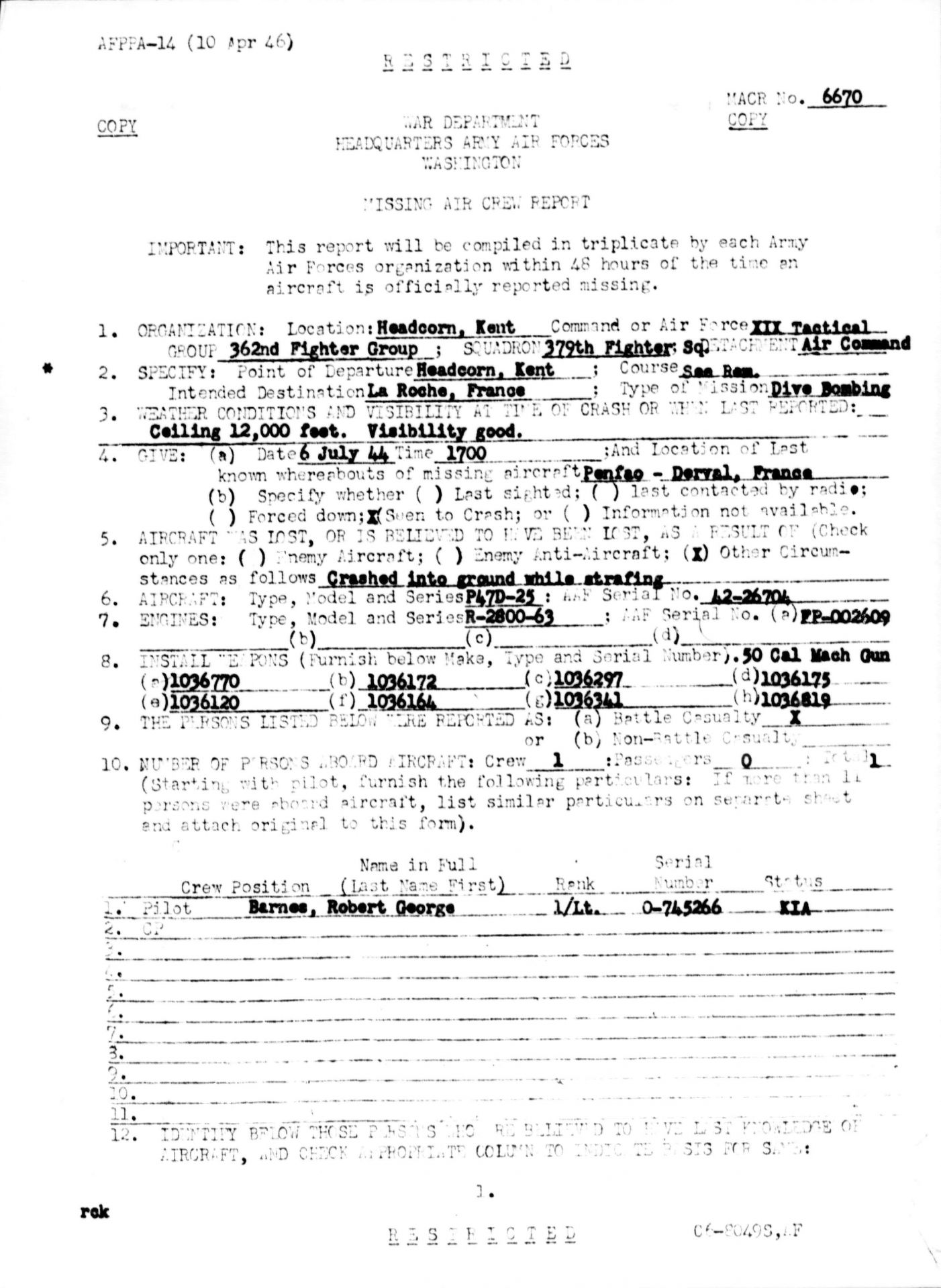
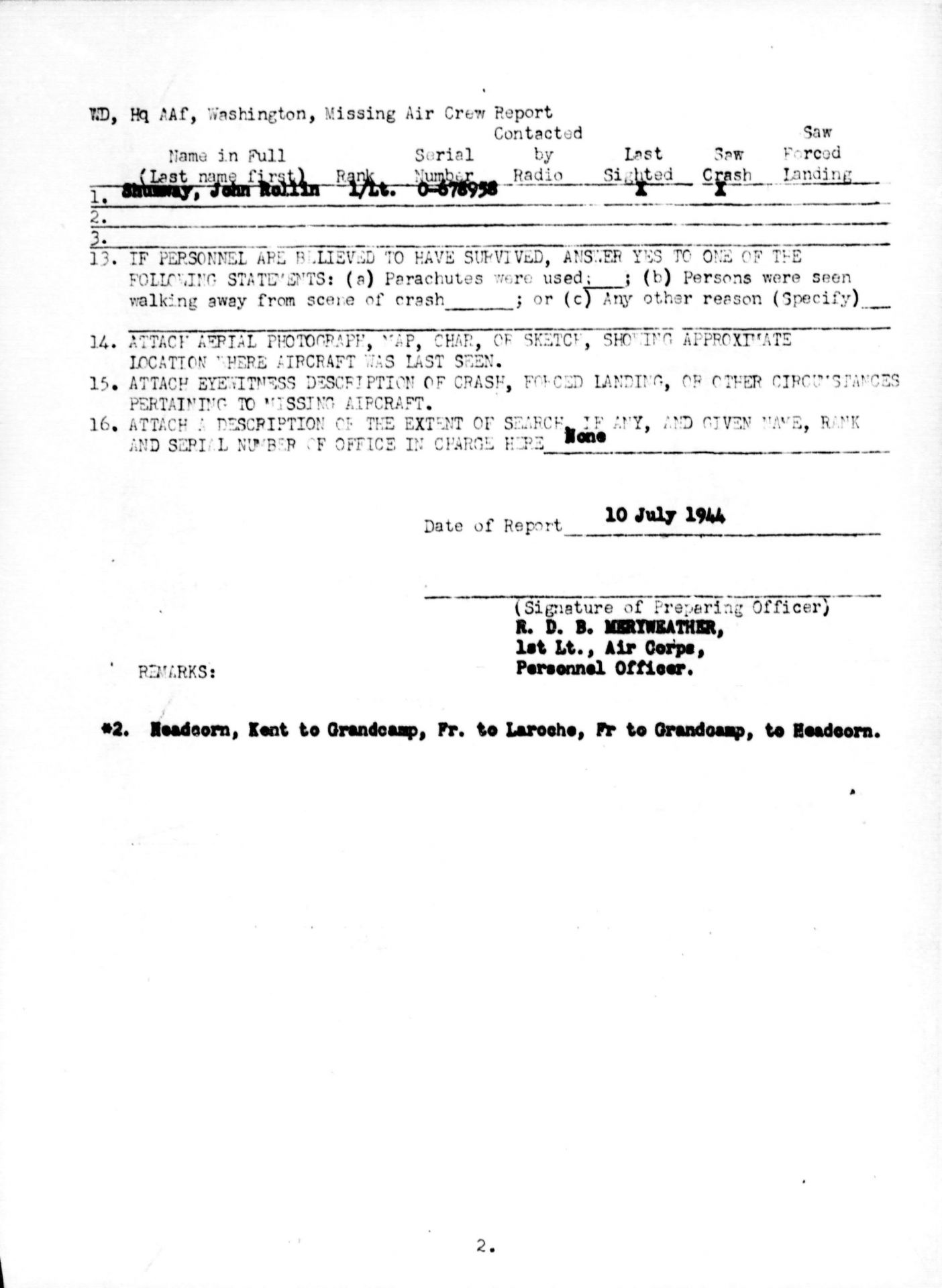
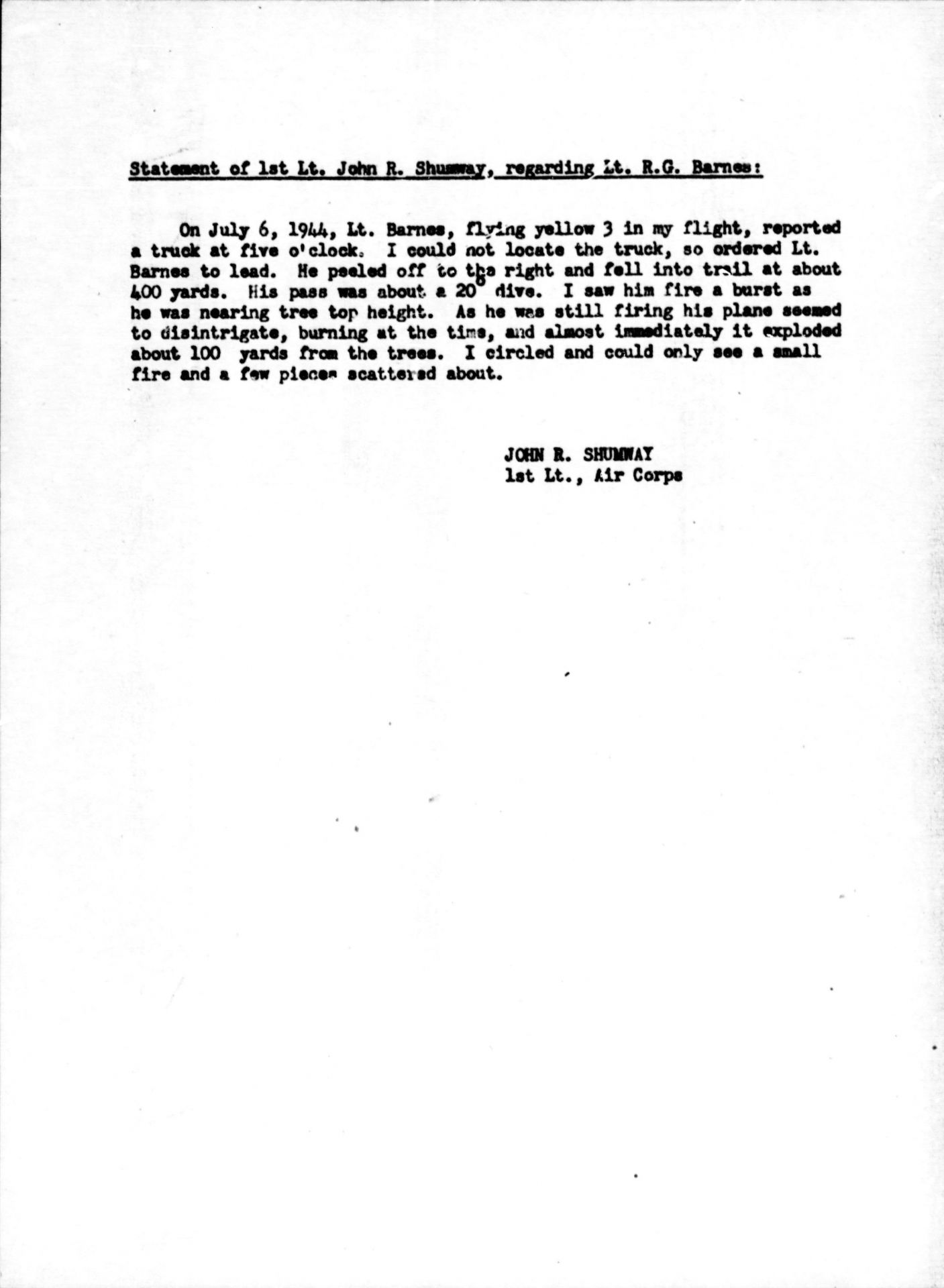
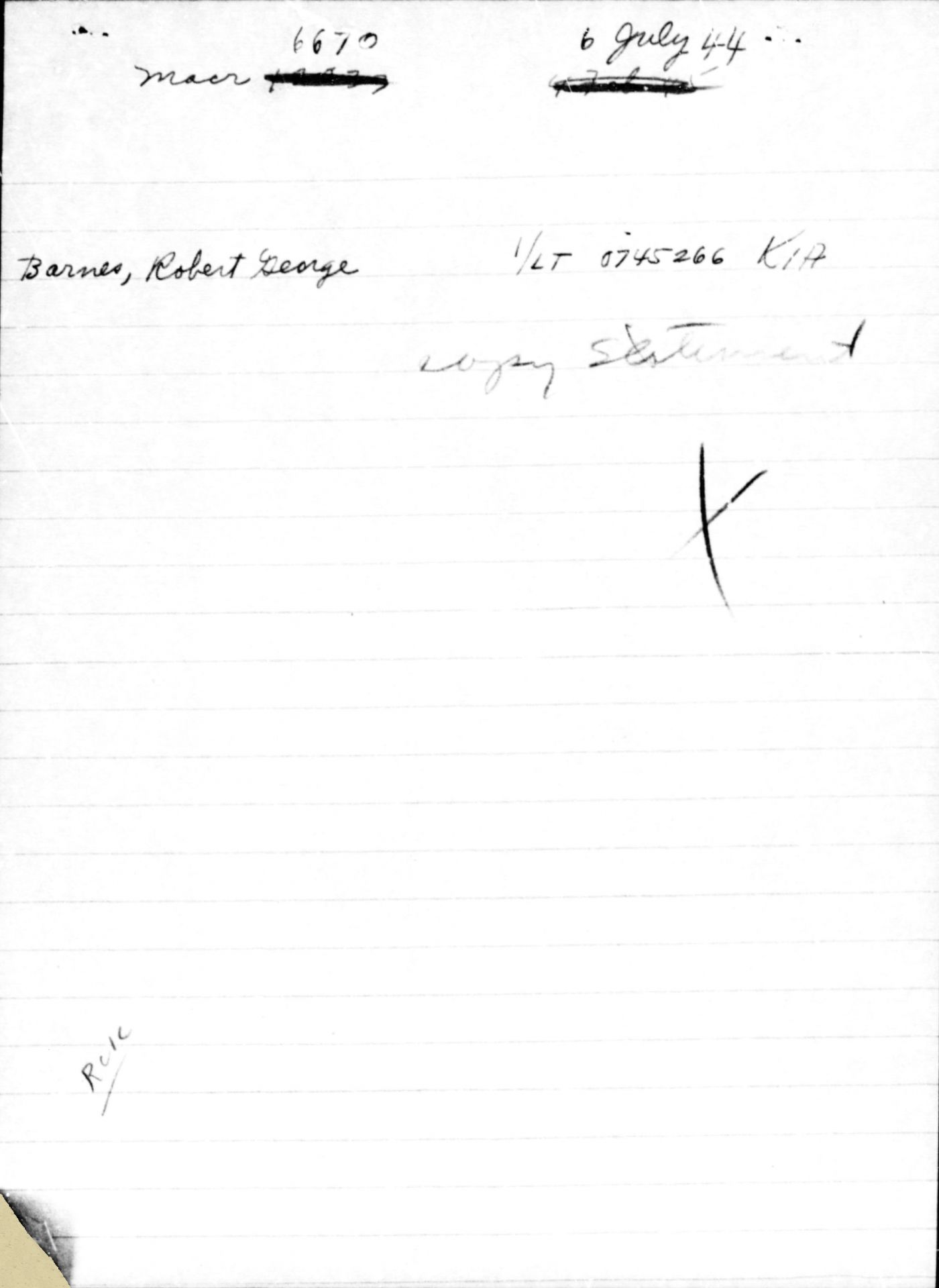

• Derval - "Vie Rurale au XXème siècle - 1900 - 1950" (pages 157 and 158)
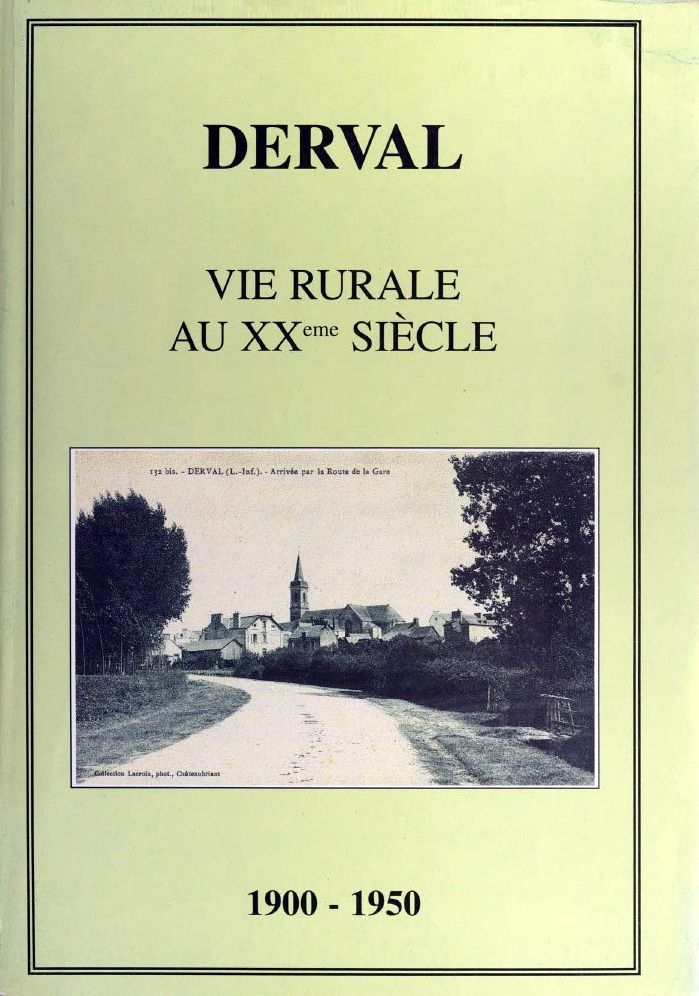
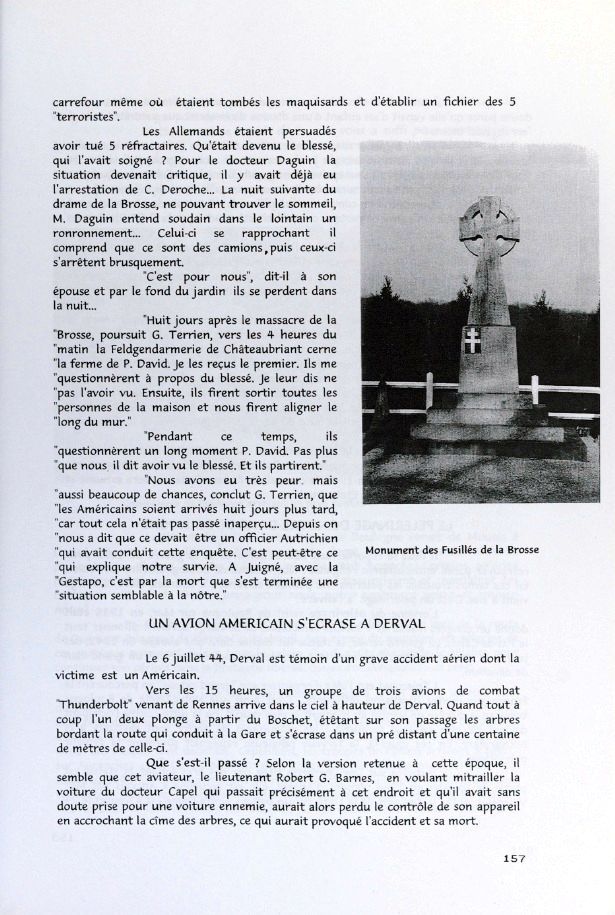
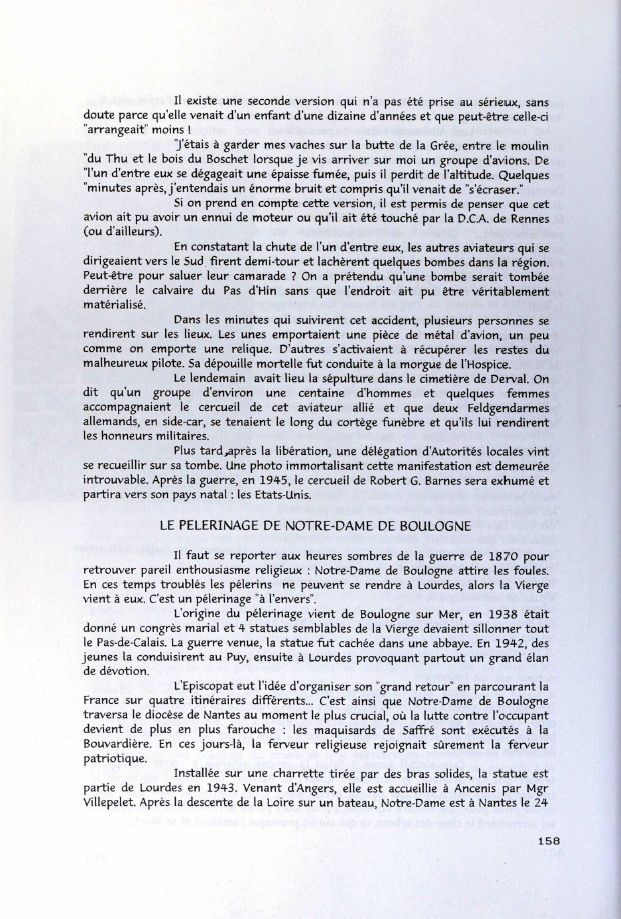
Ajouter un commentaire